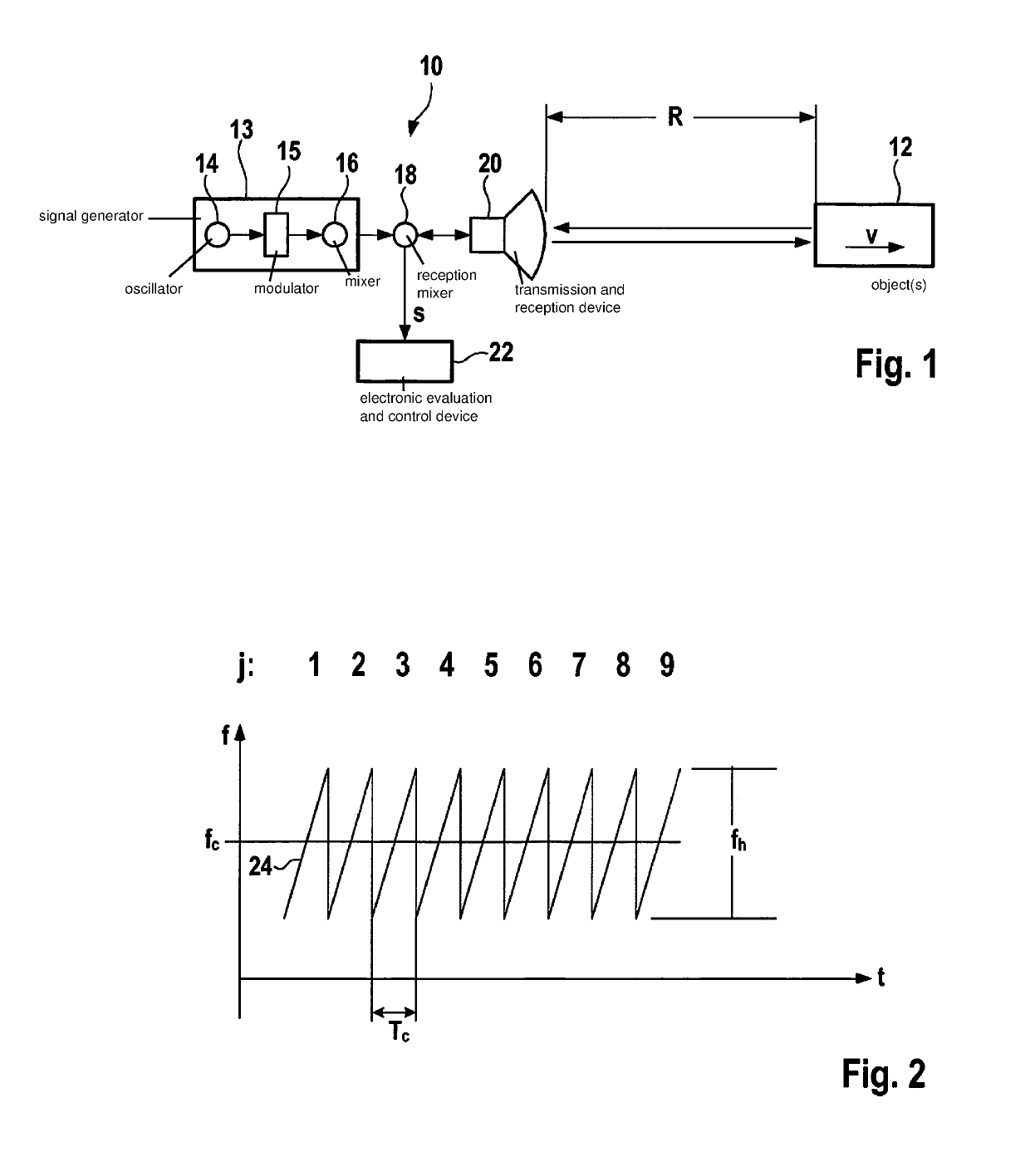Radar sensor for motor vehicles
a technology for radar sensors and motor vehicles, applied in the direction of instruments, measurement devices, and reradiation, can solve the problems of increasing computation complexity, increasing computation complexity, and cognitive radar approaches becoming more and more significant, and achieve the effect of greater accuracy
- Summary
- Abstract
- Description
- Claims
- Application Information
AI Technical Summary
Benefits of technology
Problems solved by technology
Method used
Image
Examples
Embodiment Construction
[0031]FIG. 1 is a simplified block diagram depicting an FMCW radar sensor 10 that, for example, is installed at the front of a motor vehicle and serves to measure distances R and relative speeds v of objects 12, for example of preceding vehicles. Radar sensor 10 has a signal generator 13 having an oscillator 14, a modulator 15, and a mixer 16 that mixes wave trains generated by the modulator up into a high-frequency band by mixing with a respective carrier frequency, and thereby generates a radar signal that is to be transmitted. Alternatively, signal generation can occur, depending on the wave train, directly with the aid of an oscillator. This radar signal is then supplied via a transmission and reception mixer 18 to a transmission and reception device 20, from which the signal is sent out toward object 12. The signal reflected at the object is received by transmission and reception device 20 and mixed, in transmission and reception mixer 18, with a portion of the transmitted sign...
PUM
 Login to View More
Login to View More Abstract
Description
Claims
Application Information
 Login to View More
Login to View More - R&D
- Intellectual Property
- Life Sciences
- Materials
- Tech Scout
- Unparalleled Data Quality
- Higher Quality Content
- 60% Fewer Hallucinations
Browse by: Latest US Patents, China's latest patents, Technical Efficacy Thesaurus, Application Domain, Technology Topic, Popular Technical Reports.
© 2025 PatSnap. All rights reserved.Legal|Privacy policy|Modern Slavery Act Transparency Statement|Sitemap|About US| Contact US: help@patsnap.com



